
Killed 3 million people between 1918 and 1922 alone, and most of Napoleon's soldiers on Russia.
Typhus is any one of several similar diseases caused by louse-borne bacteria. The name comes from the Greek typhos, meaning smoky or lazy, describing the state of mind of those affected with typhus. Rickettsia is endemic in rodent hosts, including mice and rats, and spreads to humans through mites, fleas and body lice. The arthropod vector flourishes under conditions of poor hygiene, such as those found in prisons or refugee camps, amongst the homeless, or until the middle of the 20th century, in armies in the field.
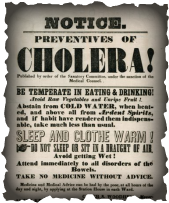
8 pandemics; hundreds of thousands killed worldwide
In the 19th century, Cholera became the world's first truly global disease in a series of epidemics that proved to be a watershed for the history of plumbing. Festering along the Ganges River in India for centuries, the disease broke out in Calcutta in 1817 with grand - scale results. When the festival was over, they carried cholera back to their homes in other parts of India. There is no reliable evidence of how many Indians perished during that epidemic, but the British army counted 10,000 fatalities among its imperial troops. Based on those numbers,, it's almost certain that at least hundreds of thousands of natives must have fallen victim across that vast land. Cholera sailed from port to port, the germ making headway in contaminated kegs of water or in the excrement of infected victims, and transmitted by travelers. The world was getting smaller thanks to steam-powered trains and ships, but living conditions were slow to improve. By 1827 cholera had become the most feared disease of the century.
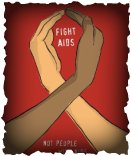
Killed 25 million people worldwide
Acquired Immune Deficiency Syndrome (AIDS) has led to the deaths of more than 25 million people since it was first recognized in 1981, making it one of the most destructive epidemics in recorded history. Despite recent improved access to antiretroviral treatment and care in many regions of the world, the AIDS epidemic claimed approximately 3.1 million (between 2.8 and 3.6 million) lives in 2005 (an average of 8,500 per day), of which 570,000 were children. UNAIDS and the WHO estimate that the total number of people living with the human immunodeficiency virus (HIV) has reached its highest level. There are an estimated 40.3 million (estimated range between 36.7 and 45.3 million) people now living with HIV. Moreover, almost 5 million people have been estimated to have been infected with HIV in 2005 alone.
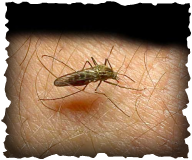
Kills about 2 million people per year
Malaria causes about 400–900 million cases of fever and approximately one to three million deaths annually — this represents at least one death every 30 seconds. The vast majority of cases occur in children under the age of 5 years; pregnant women are also especially vulnerable. Despite efforts to reduce transmission and increase treatment, there has been little change in which areas are at risk of this disease since 1992. Indeed, if the prevalence of malaria stays on its present upwards course, the death rate could double in the next twenty years. Precise statistics are unknown because many cases occur in rural areas where people do not have access to hospitals or the means to afford health care. Consequently, the majority of cases are undocumented.

Killed 75 million people worldwide.
The Black Death, or The Black Plague, was one of the most deadly pandemics in human history. It began in South-western or Central Asia and spread to Europe by the late 1340s. The total number of deaths worldwide from the pandemic is estimated at 75 million people; there were an estimated 20 million deaths in Europe alone. The Black Death is estimated to have killed between a third and two-thirds of Europe's population.
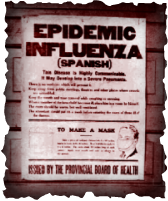
Killed 50 to 100 million people worldwide in less than 2 years.
In 1918 and 1919, the Spanish Flu pandemic killed more people than Hitler, nuclear weapons and all the terrorists of history combined. (A pandemic is an epidemic that breaks out on a global scale.) Spanish influenza was a more severe version of your typical flu, with the usual sore throat, headaches and fever. However, in many patients, the disease quickly progressed to something much worse than the sniffles. Extreme chills and fatigue were often accompanied by fluid in the lungs. One doctor treating the infected described a grim scene: "The faces wear a bluish cast; a cough brings up the blood-stained sputum. In the morning, the dead bodies are stacked about the morgue like cordwood."
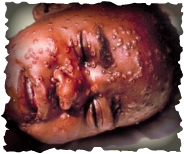
Killed more than 300 million people worldwide in the 20th century alone, and most of the native inhabitants of the Americas
Smallpox (also known by the Latin names Variola or Variola vera) is a contagious disease unique to humans. Smallpox is caused by either of two virus variants named Variola major and Variola minor. The deadlier form, V. major, has a mortality rate of 30–35%, while V. minor causes a milder form of disease called alastrim and kills ~1% of its victims. Long-term side-effects for survivors include the characteristic skin scars. Occasional side effects include blindness due to corneal ulcerations and infertility in male survivors.








 RSS Feed
RSS Feed